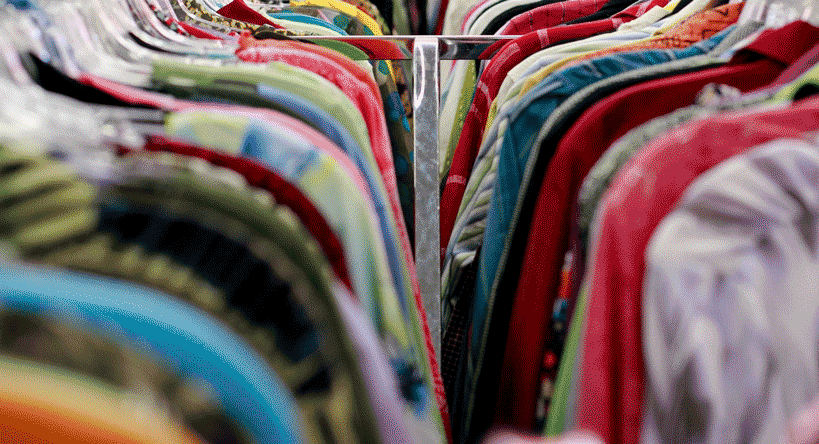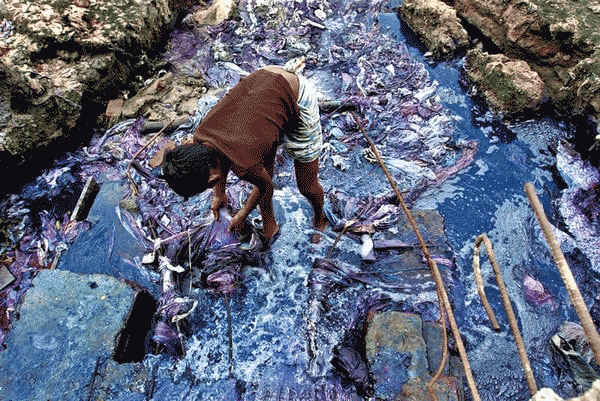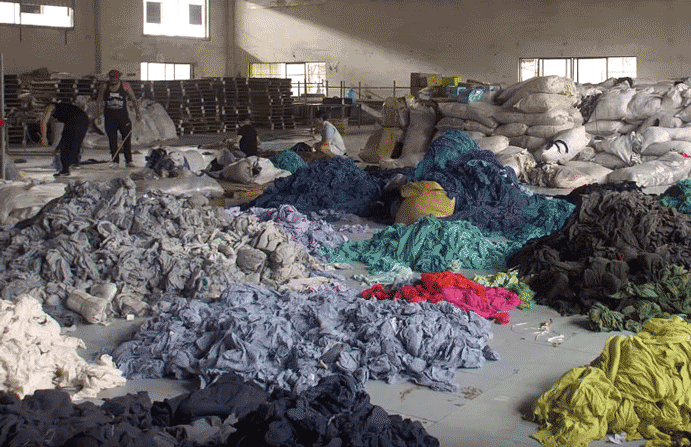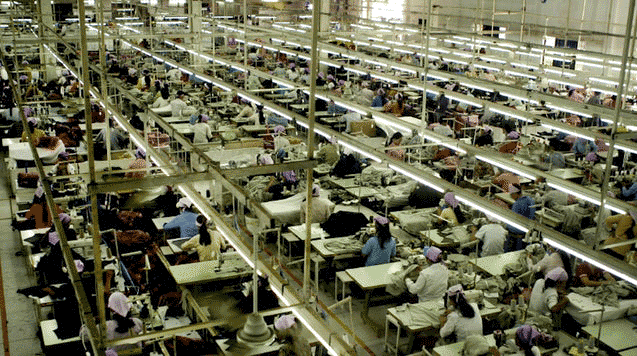Fashion is a purely visual form of self expression. It has the potential to communicate the personality, worldview, status, and aesthetic of the wearer. In making a statement about personal beliefs, fashion can very much be considered art.
The fashion industry is well known for its seasonal calendar. Every year, large fashion companies (whether they are luxury or fast fashion) produce at least two collections a year, typically Spring and Fall/Winter. Some brands go further and produce resort, couture, or bridal collections, occasionally inviting notable designers to collaborate.
However, the true ecological cost of this process is undeniable, producing pollution and waste throughout the entire chain of production. The fashion industry is the second largest polluter in the world, second only to the oil complex, and according to the United Nations, is responsible for at least 10% of the global greenhouse emissions. These are just two of the issues surrounding the $3 trillion market. This article will explore the ecological shortcomings and practices that currently plague fashion, with a second article exploring the options for sustainability.

In order to fully understand the scale of the issue, it’s essential to work from the bottom up, from initial manufacturing processes to the consumer’s transactions. There is no link in this chain that does not produce some form of waste or pollution.
Before clothes are made and sent down a runway for viewing or purchased by store buyers, the textiles must first be manufactured. This entails spinning fibers, dyeing, weaving, knitting, distressing, washing, etc. all on an industrial scale. Most of these processes are extremely water and energy intensive, though some fabrics are harder on the planet than others. Take polyester, for example. It would be difficult to find a garment in any home around the world that did not have some percentage of polyester in it. Polyester gained popularity because it is cheap to produce and supposedly hard wearing, seemingly perfect for long-term use. However, polyester is essentially made of a crude-oil byproduct (note: the largest polluter is the oil industry), and therefore its extraction contributes to the emissions of greenhouse gases. It requires copious amounts of water and energy, and due to its structure, requires extremely potent and harmful dyeing processes. Some polyester is made from recycled plastics, and while slightly better than the raw alternative, still poses similar issues, particularly in the refinement process. Similar textiles like lycra, nylon, and acrylic, also face the same issues in processing as polyester.
One might think that “natural” fibers would be more sustainable, but they come with their own unique downsides. Cotton, one of the other top fibers of choice, can be grown quickly on a large scale. However, the growing and processing of cotton is also extremely water intensive, requires widespread insecticide use, and creates difficult labor conditions that amount to mass worker exploitation. The processing of this fiber and the fabrics that follow also lead to water contamination due to the harsh chemicals and dyes so frequently used in industrial manufacturing.

In general, it’s fairly difficult to find any industrial processes that are environmentally friendly, as there is a certain level of ecological indifference that is required in order to produce on such a massive scale.
Once the base textiles have been milled, some form of shipping is required to get from the mill to the factories where the actual garments are made. Quantities of fabrics on the scale of a large fashion brand would be shipped by freight (truck, boat, air) depending on the timeline and distance of the final destination. This pumps even more emissions into the atmosphere, adding to the already steep ecological price of a plain white tee.
While many companies do attempt to maximize the yield from the fabric they’ve purchased, there will always be some form of waste on an industrial level. Even in small-scale home production of garments, there is often a small basket of odds and ends left over. Multiply that small pile by millions of garments, and that waste is large enough to fill an entire landfill. According to a study done in 2005, about 15% of the textiles meant for garment construction end up on the cutting room floor. Depending on the site of the mill/factory, much of this waste gets carried into the waterways and eventually out to the sea. These large scale factories also require ample amounts of energy to run, as much of the equipment is high-caliber in order to meet the demands daily use. The “American staple outfit” of a pair of denim jeans and a white t-shirt requires over 5,000 gallons of water just to manufacture. To put that in perspective, a single person on average drinks about 182 gallons of water per year.

This link in the production chain is also responsible for dyeing, if it wasn’t done at the textile stage, but also other techniques like distressing, overdyeing, embellishment, etc. While surface techniques like embroidery aren’t particularly wasteful, distressing certainly can be. Caustic chemicals and mechanical wear and tear are a big part of making those intentional abrasions. The waste products get washed into the water system, while finished garments get bagged up and shipped off to warehouses, which in turn ships off to distribution centers, which then send garments to their final destination.
When the garments reach the stores, they are immediately put on the rack for sale, but most selling seasons only last 2-3 months before new stock is scheduled to come in. Anything unsold is labeled as “deadstock.” The fate of this deadstock varies from company to company, but often, larger companies instruct stores or warehouses to destroy it. From incineration to mechanical tearing, millions of tons of product is disposed of each year by this process. Recent mass destruction can be credited to the volatility of trends in the fashion industry, and the consumer’s need to stay on trends. When called out on these practices, some companies publicize sustainability, but for every brand trying to be more ethical, there are even more behind them continuing this cycle. Yet again the carbon footprint grows as companies produce more products for profit and consumers feel pressure to keep up with each season, or with the growth of online ordering, especially in 2020, more trucks and planes enter the equation.

Of course, once the items make it to their final spot in the supply chain, they get worn for some time, but are eventually disposed of. While some clothes get worn for years before they wear out, some don’t last more than a few months. Due to some factories cutting corners or using cheaper materials in order to lower costs, many of these garments wear out faster than others. When people realize they have no purpose for some of their clothes, and either send it off to a second hand store or, more likely, dispose of the garment. Unfortunately, the majority of clothing produced in the Western world ends up in the landfill. On average, a person throws away about 70 pounds of clothes away per year.
Once these textiles end up in the landfill or waterways, they start to break down. Some fibers (cotton, wool, linen, etc.) will decompose over time, some will go without much effect, and others will release dyes and other potentially harmful chemicals into the soil and water. Fabrics made of acrylic, polyester, and lycra. don’t biodegrade, or they take decades or centuries to break down completely. These fabrics will wear down due to mechanical abrasion and disintegration, but they never fully go away. They begin a new life cycle as plastic microbeads, cycling through the food chain until they contaminate it all.
Along with the environmental impact, there is a huge humanitarian issue that surrounds the fashion and textile industry. From poor working conditions, low pay, and high-exposure to harmful chemicals, and the depletion of fresh-water sources, millions of people end up on the wrong side of the deal. While labor laws continue to get better, there are still locations around the world who exploit loopholes and find workers who they can subjugate to their whims. Of course beyond the manufacturing conditions, many retail stores underpay and overwork their employees who often have highly physically demanding jobs. Not to mention, where is the insidious focus on beauty standards that pervades the fashion industry as a whole, affecting the mental health of millions of individuals around the world.

While this article focused on the negative costs of fashion, not all hope is lost. The next installment of this series will focus on sustainable, ethical, and responsible alternatives to the fast fashion complex. The current age of fashion is shifting, mostly due to a huge push by the younger generation, who are environmentally conscious and highly active in campaigning for more responsible choices. If individuals are willing to change their buying/consumption habits, large waves of progress will follow.
